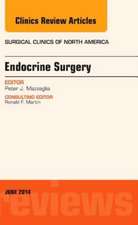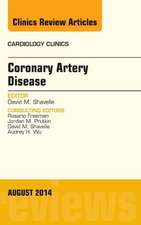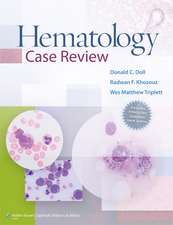Physical Activity and the Aging Brain: Effects of Exercise on Neurological Function
Editat de Ronald Ross Watsonen Limba Engleză Hardback – 5 ian 2017
This book examines the role that exercise and physical activity play in halting or modulating the deleterious effects of these numerous aging concerns by first examining the current state of research into how exercise manifests physical changes in the brain. It then discuss how physical activity combines with other lifestyle factors to benefit the aging brain, including nutrition, computerized brain training, and social engagement. Most significantly, it also covers how physical activity can serve as therapy to help alleviate the symptoms of various neurological diseases impacting aging populations, with particular emphasis on Alzheimer’s disease and age-related cognitive decline.
The book provides broad coverage of the effects of exercise and physical activity on the aging brain, its therapeutic effects, and the many factors that influence the aging process.
- Presents research scientists with a complete understanding of the role of exercise in healthy brain aging
- Considers the roles of nutrition, the mind-body connection, and other lifestyle factors
- Presents a major resource for exercise and physical activity in the neurological health of older adults
- Provides a synopsis of key ideas associated with the many aspects of physical activity, along with lifestyle factors that can modify neurological diseases and age-related neurological decline
Preț: 576.84 lei
Preț vechi: 671.57 lei
-14% Nou
Puncte Express: 865
Preț estimativ în valută:
110.39€ • 114.83$ • 91.14£
110.39€ • 114.83$ • 91.14£
Carte tipărită la comandă
Livrare economică 07-21 aprilie
Preluare comenzi: 021 569.72.76
Specificații
ISBN-13: 9780128050941
ISBN-10: 0128050942
Pagini: 238
Dimensiuni: 216 x 276 x 19 mm
Greutate: 0.89 kg
Editura: ELSEVIER SCIENCE
ISBN-10: 0128050942
Pagini: 238
Dimensiuni: 216 x 276 x 19 mm
Greutate: 0.89 kg
Editura: ELSEVIER SCIENCE
Cuprins
Part I. Overview of Exercise and Neurological Changes
1. Effects of Physical Activity on the Cerebral Networks
2. Exercise and the Developing Brain in Children and Adolescents
3. Differential Expression of the Brain Proteome in Physical Training
4. Physical Exercise-Induced Changes in Brain Temperature
Part II. Drugs of Abuse With Exercise to Modify Neurological Structure and Function
5. Physical Activity as a Therapeutic Intervention for Addictive Disorders: Interactions With Methamphetamine
6. Pharmacological Intervention of Brain Neurotransmission Affects Exercise Capacity
7. The Endocannabinoid System and Chronic Disease: Opportunity for Innovative Therapies
Part III. Factors Modulating Exercise in Aging and Neurological Consequences
8. Changes in Cerebral Blood Flow During Steady-State Exercise
9. Biochemical Mechanisms Associated With Exercise-Induced Neuroprotection in Aging Brains and Related Neurological Diseases
10. Role of Melatonin Supplementation During Strenuous Exercise
Part IV. Exercise as Therapy for Neurological Diseases
11. Mechanisms of Functional Recovery With Exercise and Rehabilitation in Spinal Cord Injuries
12. Neural Structure, Connectivity, and Cognition Changes Associated to Physical Exercise
13. The Effect of Exercise on Motor Function and Neuroplasticity in Parkinson’s Disease
14. Physical Exercise and Its Effects on Alzheimer’s Disease
15. Cortical Reorganization in Response to Exercise
16. Exercise Enhances Cognitive Capacity in the Aging Brain
Part V. Lifestyle Exercise Affecting Neurological Structure and Function in Older Adults
17. Synergistic Effects of Combined Physical Activity and Brain Training on Neurological Functions
18. Physical Activity: Effects of Exercise on Neurological Function
19. Update of Nutritional Antioxidants and Antinociceptives on Improving Exercise-Induced Muscle Soreness
20. Effects of Exercise-Altered Immune Functions on Neuroplasticity
1. Effects of Physical Activity on the Cerebral Networks
2. Exercise and the Developing Brain in Children and Adolescents
3. Differential Expression of the Brain Proteome in Physical Training
4. Physical Exercise-Induced Changes in Brain Temperature
Part II. Drugs of Abuse With Exercise to Modify Neurological Structure and Function
5. Physical Activity as a Therapeutic Intervention for Addictive Disorders: Interactions With Methamphetamine
6. Pharmacological Intervention of Brain Neurotransmission Affects Exercise Capacity
7. The Endocannabinoid System and Chronic Disease: Opportunity for Innovative Therapies
Part III. Factors Modulating Exercise in Aging and Neurological Consequences
8. Changes in Cerebral Blood Flow During Steady-State Exercise
9. Biochemical Mechanisms Associated With Exercise-Induced Neuroprotection in Aging Brains and Related Neurological Diseases
10. Role of Melatonin Supplementation During Strenuous Exercise
Part IV. Exercise as Therapy for Neurological Diseases
11. Mechanisms of Functional Recovery With Exercise and Rehabilitation in Spinal Cord Injuries
12. Neural Structure, Connectivity, and Cognition Changes Associated to Physical Exercise
13. The Effect of Exercise on Motor Function and Neuroplasticity in Parkinson’s Disease
14. Physical Exercise and Its Effects on Alzheimer’s Disease
15. Cortical Reorganization in Response to Exercise
16. Exercise Enhances Cognitive Capacity in the Aging Brain
Part V. Lifestyle Exercise Affecting Neurological Structure and Function in Older Adults
17. Synergistic Effects of Combined Physical Activity and Brain Training on Neurological Functions
18. Physical Activity: Effects of Exercise on Neurological Function
19. Update of Nutritional Antioxidants and Antinociceptives on Improving Exercise-Induced Muscle Soreness
20. Effects of Exercise-Altered Immune Functions on Neuroplasticity







